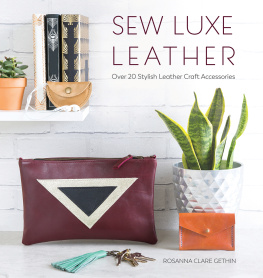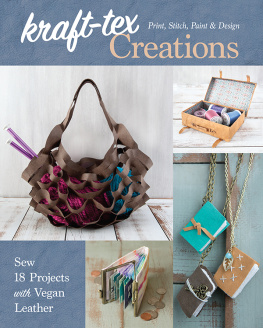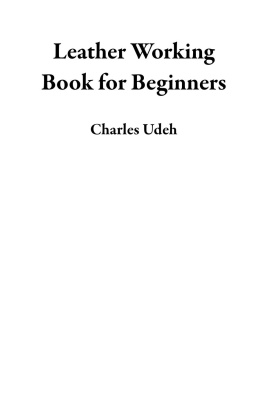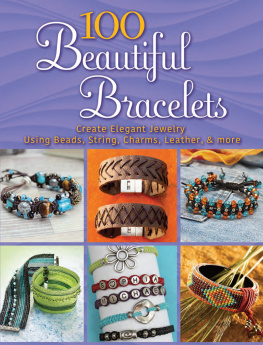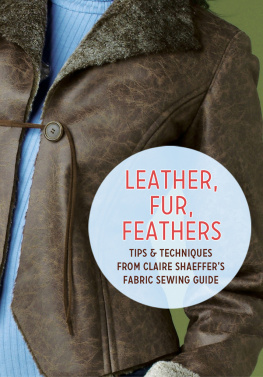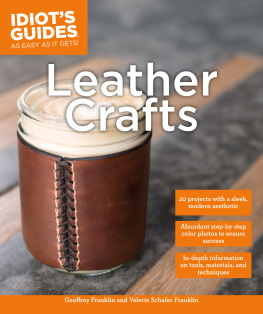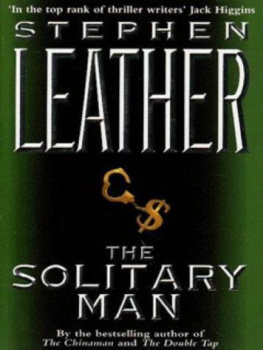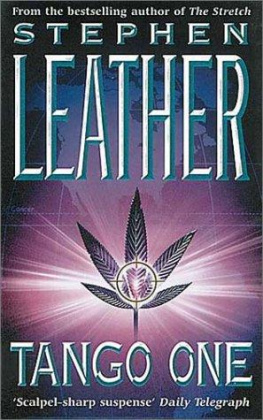Contents
Guide
SEW LUXE
LEATHER
Over 20 Stylish Leather Craft Accessories
ROSANNA CLARE GETHIN

www.sewandso.co.uk
CONTENTS

INTRODUCTION
I first became interested in working with leather whilst walking around Spitalfields Market in London. This was about 15 years ago and Id just graduated from university with a degree in Graphic Design. Looking at the stalls of handmade goods, many by fashion graduates, I was especially drawn to the unique designs and the quality of the materials used, particularly the leather bags! However, as a recent graduate, I simply couldnt justify (or afford) to buy one; then I turned down the next aisle of stalls and came across a man selling hides of leather. There were all sorts of colours, textures, shapes and sizes, and I remember the overwhelming, amazing smell. Although I had never used a sewing machine, or worked with leather before, I decided there and then that I would have to learn. I bought two pieces of leather and asked my mum to teach me to sew. That was it I was hooked!
I spent the next few years practising how to make leather bags and purses on my mothers little old Elna sewing machine with just a leather needle and standard sewing thread. It was a hobby that became more and more of a passion. Meanwhile, I had trained to be a Design Technology Teacher and brought some of the skills I had taught myself into the classroom. I introduced a bag making project to my GCSE classes and they loved it! After almost ten years teaching in schools, completing a Masters degree in Textile Design and taking several courses specifically in bag making, I decided to take the leap. I gave up my day job and started my own craft business making leather bags and accessories. However, I also used my teaching experience to run workshops and teach leather craft to adults both in groups and in one-to-one classes. That was three years ago now and it was the best decision I ever made. The classes are going from strength to strength and I feel that my teaching career gave me the crucial experience and confidence to teach leather craft.
The aim of the projects within this book is to teach you the basics of leatherwork, gradually allowing you to work up to more complex items. These projects are also designed so that you dont have to spend a fortune on tools and materials to get started. Like me, you can start with a small domestic sewing machine and a few affordable basics on the tiniest of budgets (so students and graduates rejoice!).
I hope you enjoy using this book as much as I did making it.
Happy sewing!

ALL ABOUT LEATHER
Leather is a durable, tactile and versatile material that has been used for countless products over thousands of years. In fact, it is one of a few materials that many believe actually improves with age! It is important to understand a bit about how leather is produced in order to best know how to choose, use and work with it. Leather comes from the skin of an animal, mainly cow, sheep and pig hide. The skin is treated to preserve it in a process known as tanning and there are two main methods of tanning leather: vegetable and chrome.
VEGETABLE TANNING
This is the traditional method utilising the tannins found in vegetable matter such as tree bark, wood, leaves and some fruits. Skins are soaked in liquid rich in these extracts, producing strong and firm leather. This type of leather is therefore perfect for making items like saddles, belts and shoes as it retains most of its natural oils making it easy to mould into shapes and emboss with pressure.
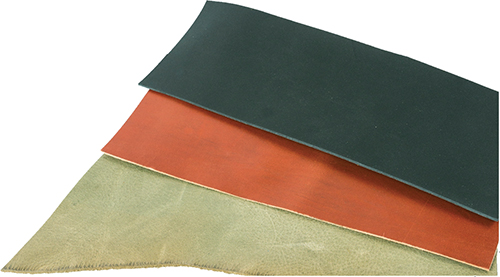
Traditionally, vegetable-tanned leather is perfect for a classic finish on favourite accessories.
CHROME TANNING (CHROME DYEING)
This is a relatively modern way of treating leather compared to vegetable tanning. Invented in the mid-19th century, it uses a solution of chemicals, acids and salts including chromium sulphate. This method creates softer, stretchier leather as the chemicals break down the natural fibres. It is a much faster method and the leather can be dyed in a wide variety of colours making it ideal for the fashion industry. However, it is considered more harmful to the environment due to the chemicals used. This may be something to consider when buying leather or deciding which projects to make. Due to its structure and softness, chrome-dyed leather generally requires heat for any embossing to be permanent.
VEGETABLE VS. CHROME
Generally, vegetable-tanned leather is better for hand stitching and chrome-dyed leather is better for machine sewing. If in doubt, ask when you buy and explain what you wish to make with it; the supplier will advise you as to which is the most suitable leather to buy.
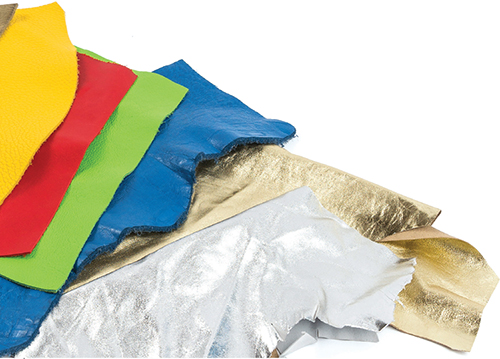
Chrome-dyed leather allows for a variety of colours to be incorporated into your projects.
BUYING LEATHER
When starting out with leatherwork it is advisable to purchase your leather in person, allowing you to handle and check it for any holes or imperfections. Leather can be very expensive and usually the smallest quantity you can buy is half a hide which, depending on the thickness and quality, could cost 30 to 300! Hides or large pieces are usually sold by size (square footage) and graded by thickness; offcuts are priced by weight. Start with small projects that allow you to buy offcuts or reduced leather from sale bins. Then work up to buying larger pieces when you are more confident in your skills, have more understanding of how leather works when sewing, and know the colours and types with which you like working. Unless you need to create many pieces in the same leather on a regular basis, you may never need to buy a full hide.
FULL GRAIN VS. TOP GRAIN
With the actual grain of the leather, you will find two options:
Full grain leather retains the natural grain on the surface, meaning it will develop a natural patina over time. It retains strength and durability but is more susceptible to stains and marks.
Top grain leather has had its top layer sanded away to remove the natural grain and top fibres, reducing its strength. An imitation grain is sometimes applied for a more uniform look. A surface finish or coating is often applied making the leather more stain-resistant.
Many leather suppliers have offcuts and sale pieces of vegetable-tanned and chrome-dyed leather large enough for many projects in this book.
GLOSSARY
Use this quick reference to help you become familiar with the leathercraft terms used in the book.
AWL
A small metal pointed tool used for piercing holes, especially in leather
BAGGING OUT
Turning a bag or purse the right way around after sewing inside out

